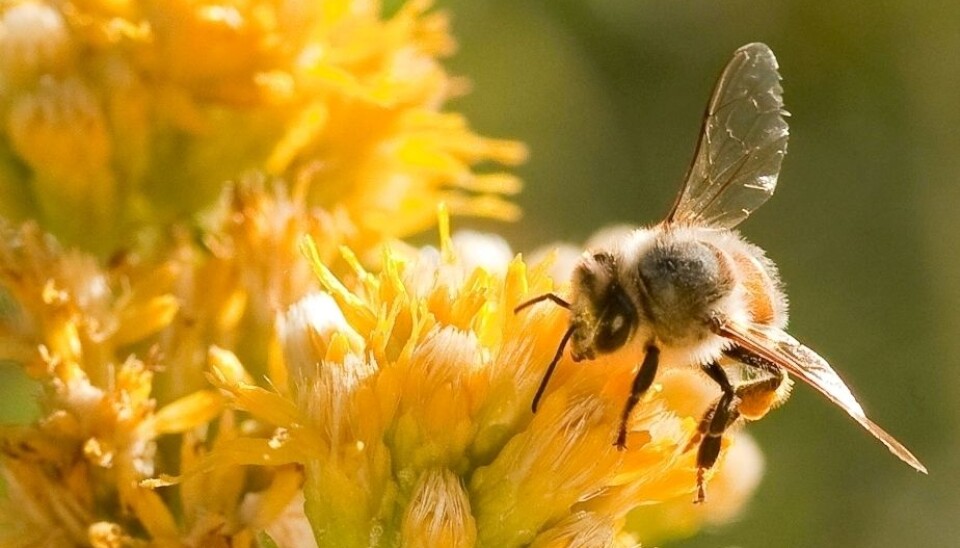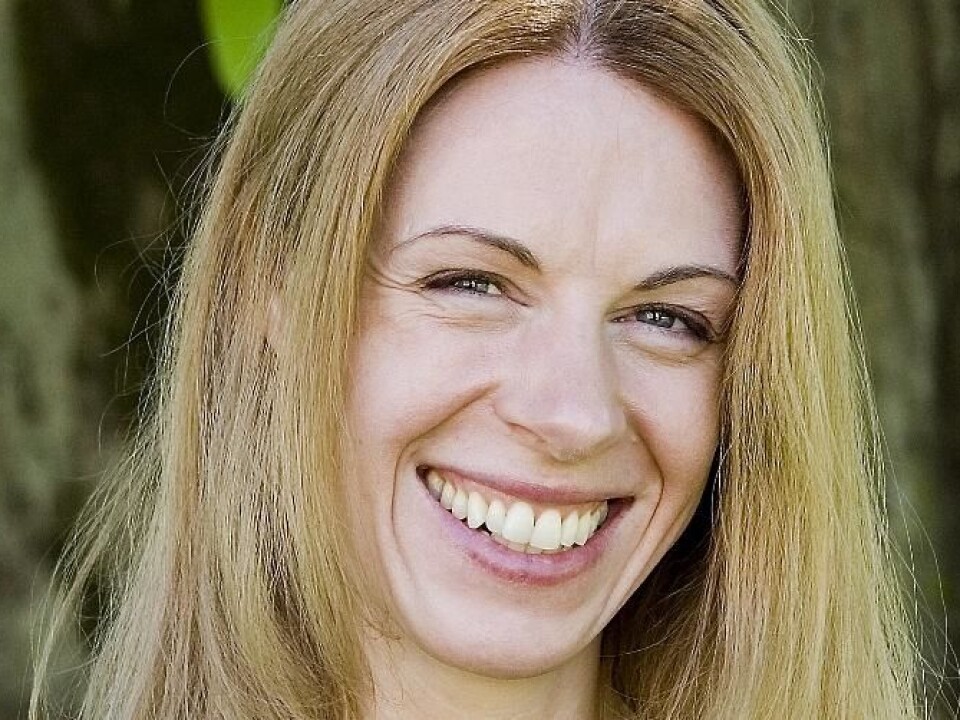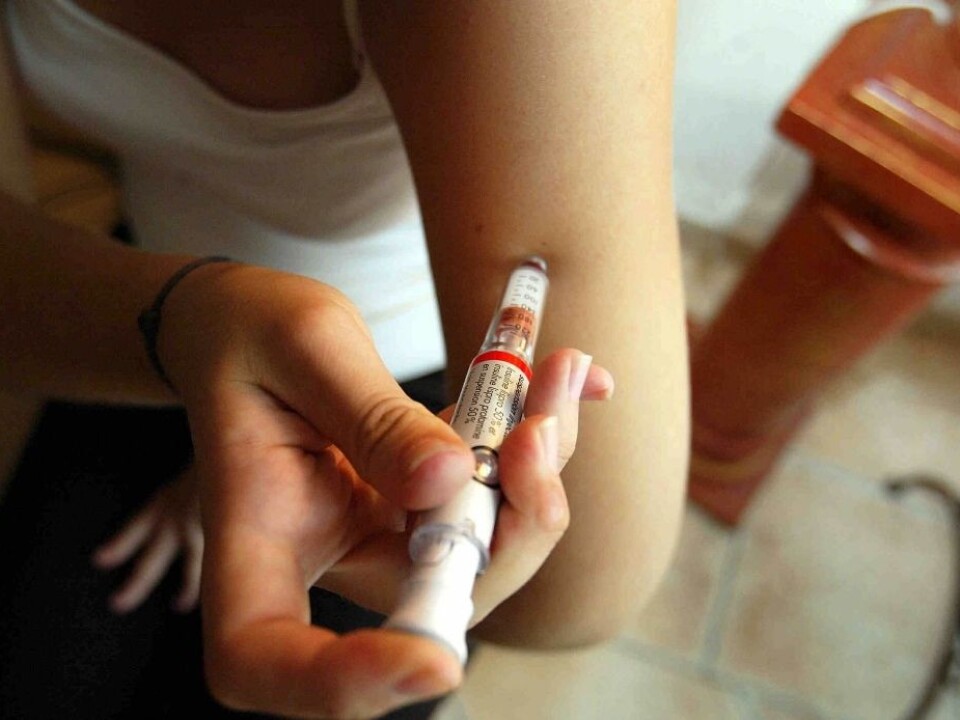
Sugar shock for busy bees
When genes that control honey bees’ taste for sweetness are inactivated, the bees nearly end up as diabetics. This can provide hints about the link between our sense of taste and our body's health.
Denne artikkelen er over ti år gammel og kan inneholde utdatert informasjon.
The Secret Life of Bees was a bestselling novel – and it’s certainly true that there’s much we don’t know about these social insects.
Now Gro Amdam, an associate professor who divides her time between Arizona State University in Tempe, AZ and the Norwegian University of Life Sciences (UMB) in the town of Ås, and her American colleagues have discovered a new facet of the life and behaviour of bees.
The scientists disabled two genes that control the insects’ gusto for pollen and nectar and found that the bees ended up with high blood sugar and low insulin levels – a condition akin to diabetes in humans.
This can point toward a possible explanation regarding ways humans develop this serious disease.
Two genes knocked down, sugar craving up

Amdam’s colleague Ying Wang of Arizona State University, who's the main author of the study, says that bees’ lives are guided in many ways by the taste of sugar:
“A bee’s sensitivity to sugar reveals her attitude towards food, how old the bee is when she starts searching for nectar and pollen, and which kinds of food she prefers to collect,” he explains.
When Wang and Amdam inactivated two genes, called vitellogenin and ultraspiracle (or USP), the bees' sense of taste changed.
Wang says that by suppressing these two ‘master genes’, they discovered that bees can become more sensitive to sweet taste.

“But interestingly," he adds, "these bees also had very high blood sugar levels and low levels of insulin, much like people who have Type 1 diabetes.”
“Fat” and hungry without the genes
Life became tough for the poor test bees that lost their control of sweetness:
“Bees that are more sensitive to sugar are hungrier and drink more sugar water in the laboratory," says Amdam. "We also know that such bees gain weight faster than control bees with normal sugar perception.”
She emphasises that for bees, gaining weight means just that: gaining weight – not gaining girth in proportion to their length.
She also explains that since insects have their skeletons on the outside of their bodies, they can’t see that bees are fatter. Their bodies don’t gain volume. Nevertheless, they can gain fat inside their exoskeletons.
Ten year’s work
Amdam and her colleagues came across this gene combination a decade ago.
“I deactivated vitellogenin for the first time ten years ago as part of my doctoral thesis work.”
She adds that the other gene, USP, had been thoroughly studied by a colleague in Brazil, and her laboratory developed a deactivation protocol in 2009. Thus their group had the recipe for both deactivation methods and she wanted to see what happened if they managed to combine them.
“It was a lot of work. Should we render one gene inactive and then the other, or both simultaneously on the same day?” she asks. “We found that the best deactivation effect was achieved by turning both of them off on the same day they became adults, in other words when they emerged from the pupal stage.”
This is the first time two genes have been deactivated at the same time in bees.
“It was quite surprising to encounter such a major effect on the metabolic biology and a diabetes-like syndrome in bees.”
Counteracted with resveratrol?
Do you know what happens if you turn on the genes again – do they regain their health?
“Unfortunately, we lack the technology to switch the genes on once they’ve been switched off. But we do have a substance, resveratrol, which can curb normal bees’ appetites for sugar, and we’ll test to see if it can restore the feeding habits of bees whose vitellogenin and USP have been deactivated.” she says.
Resveratrol is the substance in red wine purported to extend our lives.
She explains that speculations have been made about whether resveratrol can protect against diabetes by lowering human blood sugars. This makes it doubly interesting to test resveratrol on bees that have deactivated vitellogenin and USP, because they exhibit a diabetes-like syndrome.
No beeline − but similarities offer human insights
The sense of taste is an element of our evolution which helps us survive. Bitterness can indicate that something is poisonous, whereas sweetness signals a high energy source.
Amdam says that it’s important for animal life – humans as well as bees – for the sense of taste to communicate correctly with the body’s energy levels and general health, so that we eat more or less what we need.
“Without a well-functioning sense of taste, we can end up with unhealthy food habits and metabolic disorders, such as obesity or diabetes,” she adds.
Of course, one shouldn’t make a beeline between these insects and humans – we are after all very different species – and have our own characteristics to consider.
But we can get some lessons from the bees’ taste for sweets.
Vitellogenin is comparable to the human gene Apolipoprotein B, whereas usp acts together with a hormone which functions for bees in similar ways to how hormones from the thyroid gland work for us humans. So it isn’t totally inconceivable that some of the same mechanisms apply to both species.
Humankind and bees have the same origin. We split off from a common ancestor around 600 million years ago.
“That’s quite a timespan, but this heritage has made many bodily functions of humans and bees similar, for instance our brain cells, and we share principles for basic organ and metabolic functions,” says Amdam.
“So we can learn a lot of biology from bees that is relevant for humans.”
-------------------------------------------
Read this article in Norwegian at forskning.no
Translated by: Glenn Ostling






























